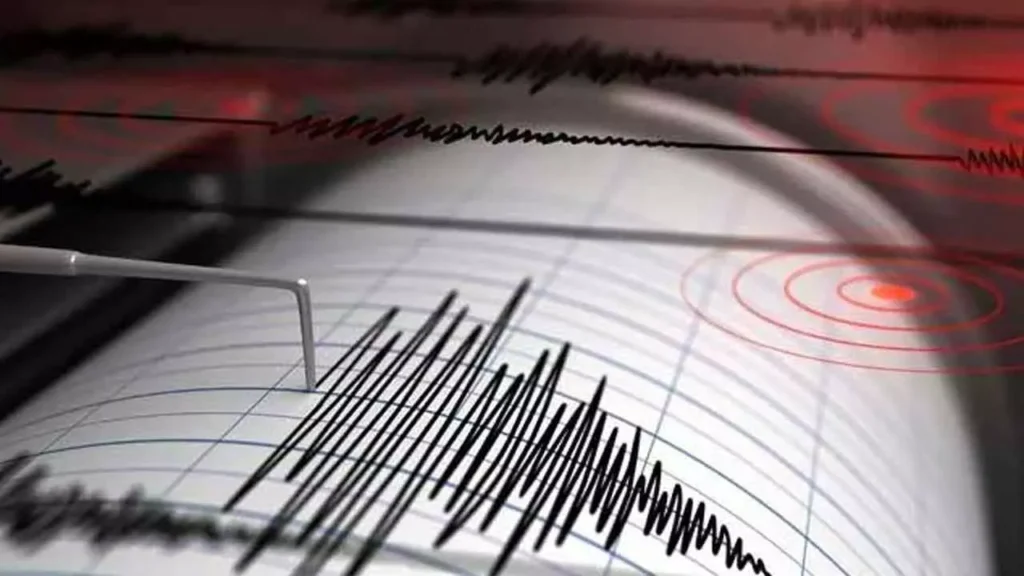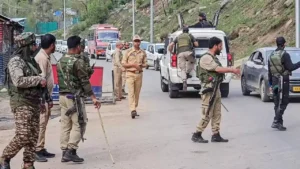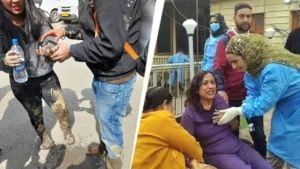Magnitude 3.1 Earthquake Strikes Bhavnagar, Gujarat No Casualties Reported

On the morning of April 9, 2025, a magnitude 3.1 earthquake struck the city of Bhavnagar in Gujarat, India. The earthquake, though moderate in size, caused significant concern among residents of the region. Fortunately, there have been no reports of casualties or major damage to infrastructure, although the tremors were felt across a wide area. Authorities have acted swiftly to assess the situation and reassure the public about the state of emergency response efforts.
The Earthquake Details
According to the Indian Meteorological Department (IMD), the earthquake occurred at approximately 8:45 AM IST, with its epicenter located around 10 kilometers from Bhavnagar, in the western coastal region of Gujarat. The quake had a magnitude of 3.1 on the Richter scale, which is classified as a moderate tremor that typically causes limited damage to buildings and structures.
The tremors were felt in parts of Bhavnagar, a major port city, as well as neighboring towns. While the quake was relatively small in magnitude, it was enough to be felt by people in the region, prompting some to evacuate buildings for safety. The quake’s depth was recorded at 5 kilometers, which contributed to the moderate intensity of the tremors.
Impact on Bhavnagar and Surrounding Areas
In Bhavnagar, the earthquake led to widespread panic for a brief period, with many people rushing outside in fear. However, the earthquake’s low magnitude and the region’s preparedness for seismic activity helped prevent any major damage. The buildings in Bhavnagar are constructed to withstand moderate earthquakes, which minimized the risk of structural damage.
Though the tremors caused some anxiety among residents, there have been no reports of significant structural damage to homes, commercial buildings, or public infrastructure. Local authorities immediately conducted a survey to check for any damage, and no major concerns were raised.
In the surrounding areas, including towns such as Gariyadhar and Palitana, residents reported feeling mild tremors, but like Bhavnagar, there were no reports of destruction or injury. The tremors were felt more as a short, shaking sensation rather than a prolonged disturbance, which further mitigated the risk of accidents or panic.
Emergency Response and Preparedness
Following the earthquake, the National Disaster Response Force (NDRF) and local authorities were promptly mobilized to assess the situation. Teams were dispatched to the most affected areas to check for damage and provide assistance if required. Fortunately, due to the mild intensity of the quake, the emergency response was more precautionary than reactive.
The Gujarat state government issued a statement reassuring the public that there were no casualties or significant damage. The local disaster management authorities maintained that there was no need for evacuation, as the tremors did not pose a significant threat.
In Bhavnagar, municipal services were immediately put on alert, with teams monitoring vulnerable areas such as older buildings and public infrastructure. Fire departments and police forces were also on standby in case of any unforeseen developments. The state government has confirmed that there were no reports of landslides or damage to critical facilities such as hospitals, schools, or roads.
Seismic Activity in Gujarat
While the recent earthquake was relatively mild, Gujarat is no stranger to seismic activity. The region lies within a seismically active zone, as it is situated near the boundary of the Indian and Eurasian tectonic plates. Gujarat has experienced several earthquakes over the years, with the most devastating being the 2001 Bhuj earthquake, which resulted in significant loss of life and widespread destruction.
Since then, seismic monitoring and building regulations have been strengthened in Gujarat, particularly in cities like Bhavnagar and Surat. Efforts have focused on improving the resilience of infrastructure to withstand earthquakes and minimizing potential damage. Bhavnagar, as a coastal city, has also benefited from improved earthquake-resistant construction practices, which likely helped prevent any major damage during this recent quake.
Public Awareness and Safety Measures
The earthquake in Bhavnagar serves as a reminder of the importance of public awareness and preparedness for seismic events. Gujarat’s disaster management initiatives have been focused on educating residents about earthquake safety, including measures to take during a quake and how to react in the aftermath. Many schools and community centers in the region have conducted earthquake drills, ensuring that people are aware of what to do if tremors occur.
Despite the fact that the magnitude 3.1 earthquake caused no serious harm, the experience highlights the need for continued vigilance and preparedness. The authorities recommend that people living in earthquake-prone areas should remain alert and familiarize themselves with safety protocols such as “Drop, Cover, and Hold On” during an earthquake.
Additionally, residents are encouraged to secure heavy furniture and items that could fall during an earthquake, to reduce the risk of injury. Ensuring that buildings are constructed according to modern earthquake-resistant standards is also a key factor in preventing large-scale damage in the event of a more powerful quake.



